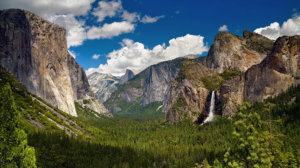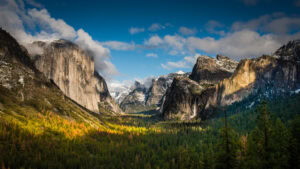Yosemite waterfalls are like the cast of a blockbuster film. Some are superstars, always mugging for the camera. But it’s the supporting cast that make the film an Academy Award Winner instead of a box-office bust. They fill out the story with depth and nuance.
These lesser-known Yosemite waterfalls are agua from heaven for the dedicated nature buff, and visiting them can take you from casual tourist to cascade connoisseur over the course of a day. From the hidden falls located well outside of Yosemite Valley, to the seasonal – blink and they’re gone falls – that appear with the melting snow, many are surprised at just how many falls grace Yosemite other than the big names like Bridalveil Fall and Yosemite Falls.
With a deep appreciation of the graceful drops, multi-stage chutes and churning cataracts, as well as a passion for sharing the lesser known side of one of America’s most beloved National Parks, here is our guide to the lesser-known Yosemite waterfalls…
Chilnualna Falls
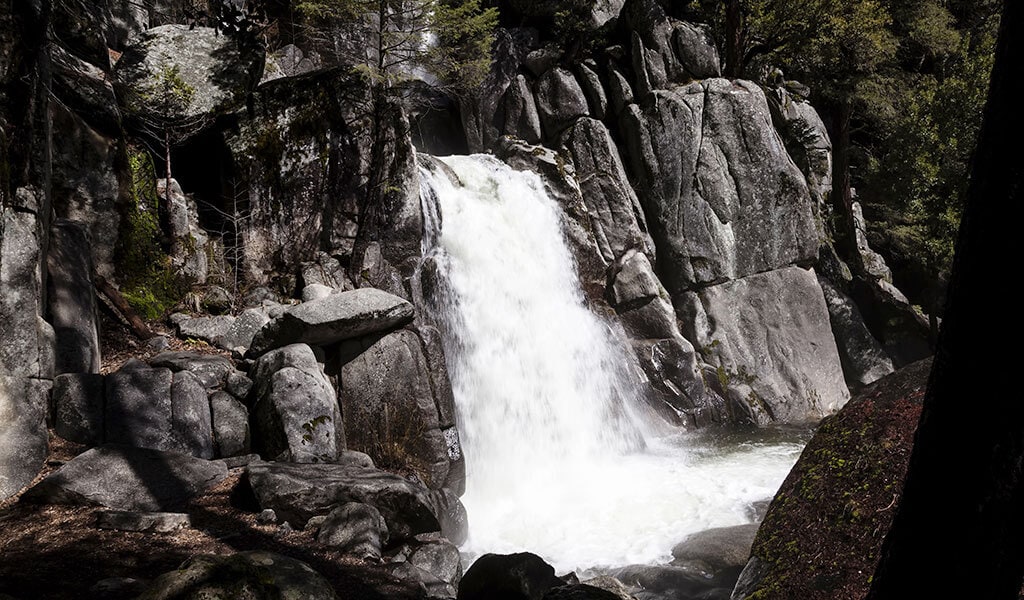
Region: Wawona (Southern Yosemite)
Drop: 690 ft (210 m), multiple tiers
Best Time To See: Year-round, with peak flow in May
Chilnualna Falls (“Chil-noo-all-na”) gets a fraction of the visitors compared to its cousins in Yosemite Valley, and with a strenuous hike is serenaded by snowmelt as the trail plays peek-a-boo with the falls, weaving through forested sections offering views of Wawona Dome above and the village of Wawona below.
For those looking to get off the beaten path, Chilnualna Falls is the one for you. Its located away from main roads and tucked back into the small community of Wawona. To start this hike, look for a small parking area behind the office for The Redwoods in Yosemite Vacation Rentals and follow the remainder of the road on foot. Wawona is a community, so please treat the neighborhood as your own and avoid parking in driveways or on the street.
Foresta Falls
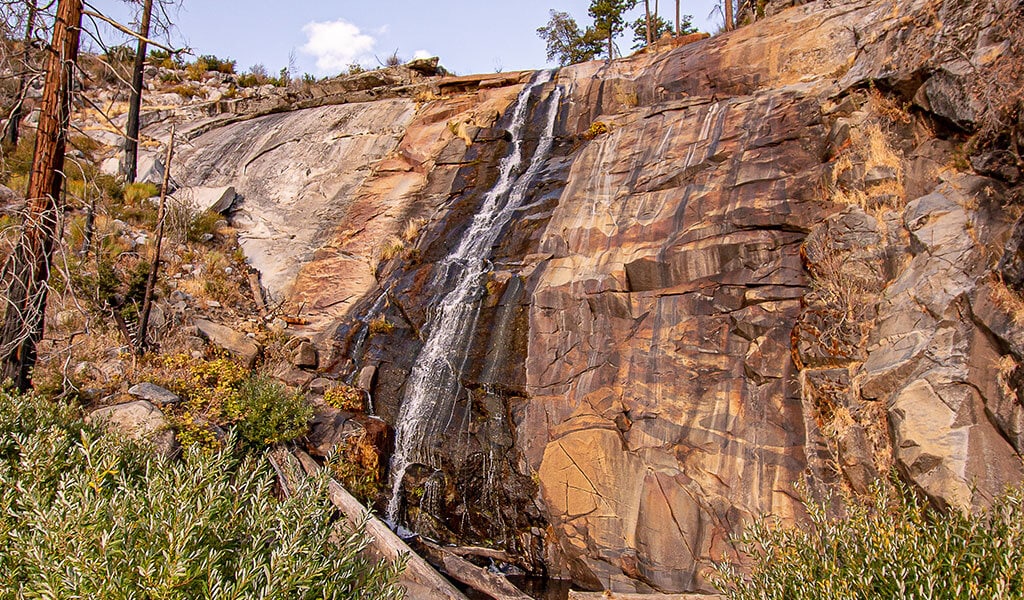
Region: Foresta (near Yosemite Valley)
Drop: Multiple cascades with a 40 ft (12 m) finale
Best Time To See: Year-round, with best flows March-June
Only six miles from Yosemite Valley, it’s surprising how few visitors have explored Foresta and its fascinating history. The easy 1.8 mile out & back trail to Foresta Falls is actually a decommissioned dirt road with views of several tumbling cascades as it descends to a wholly satisfying 40 ft (12 m) drop. Here, a ramshackle bridge provides a convenient platform for up-close views and photographs.
After viewing the cascade, take a stop by the Meyer and McCauley Barns in the big meadow in Foresta (they’re the big red buildings viewable from Highway 120). The barns are on the U.S. Register of Historic Places and stand as a testament to the early pioneering days of Yosemite’s early transplanted inhabitants.
Note: year-round residents live in Foresta so please be respectful and do not block driveways.
Sentinel Falls
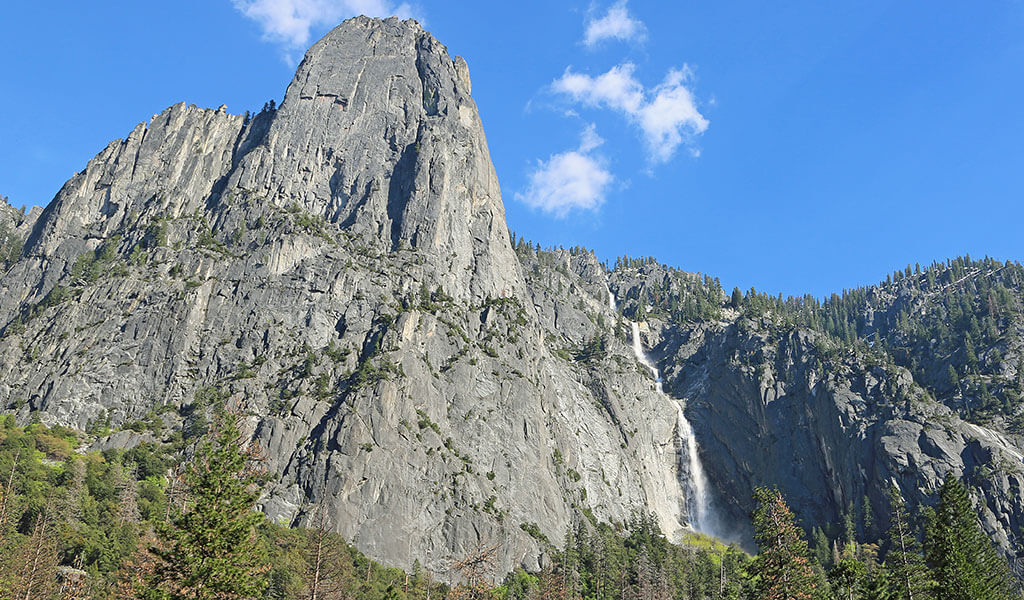
Region: Yosemite Valley
Drop: Multiple cascades from 50 to 500 ft, totaling 2,000 ft
Best Time To See: March-June, with peak flow in May
Tumbling like a giant flume from the south rim of Yosemite Valley, this seasonal cascade drops nearly as far as its more famous counterpart across the way, Yosemite Falls. No serious hiking required, views can be had at Leidig Meadow, the Four-Mile Trailhead or — if you want enjoy an authentic Yosemite Mariposa County picnic — at the Sentinel Beach Picnic Area along the beautiful Merced River.
Ribbon Fall
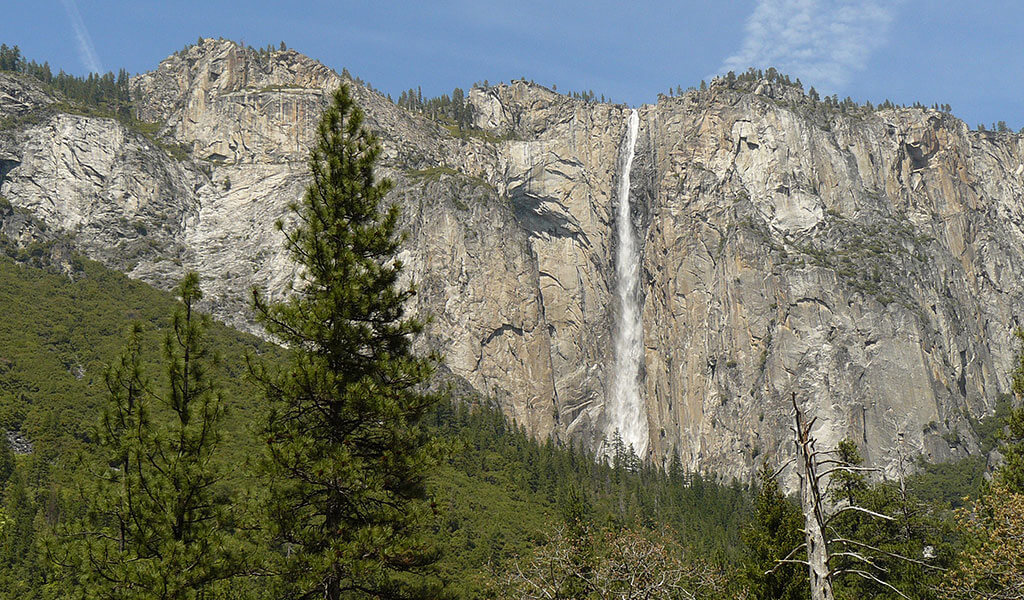
Region: Yosemite Valley
Drop: 1,612 ft (491 m), single drop
Best Time To See: March-June, with peak flow in May
As the longest single-drop waterfall in North America, you’d think Ribbon Fall would be a household name. Its seasonal flow and lack of a trail leading to its base make this towering free-fall easy to overlook yet a highlight of Yosemite’s lesser-known waterfalls. Tucked between massive granite faces just west of El Capitan, Ribbon Fall can be seen from various turnouts along Southside and Northside Roads. For the best bang for your buck, park at the Bridalveil Falls viewing area along southside drive, then turn around and view Ribbon Fall across the valley. The view can get shadowy — best time to experience full sun is late morning to early afternoon depending on the time of year.
Horsetail Fall
Region: Yosemite Valley
Drop: 2,030 ft (619 m), two-stage
Best Time To See: December-April
Horsetail Fall is a bit of a wild card regarding its status as one of the lesser-known Yosemite waterfalls. A good snowpack is required for this seasonal gem to soar, and its late winter/early spring flow means that it can be a wonderful surprise for those visiting outside of summer. The name Horsetail Fall is lesser-known, but what is now well known is the annual Yosemite Firefall event in February when conditions line up and Horsetail Fall appears as a plummeting cataract of flames. Photographers from all over the globe come to capture this unique phenom, and the Park puts special restrictions in place due to the event’s popularity. Note that restrictions for parking and how to view the mid-February lava-like cascade are in place. Take a look at our video below to learn the ins and outs of viewing “The Natural Firefall”.
Illilouette Fall
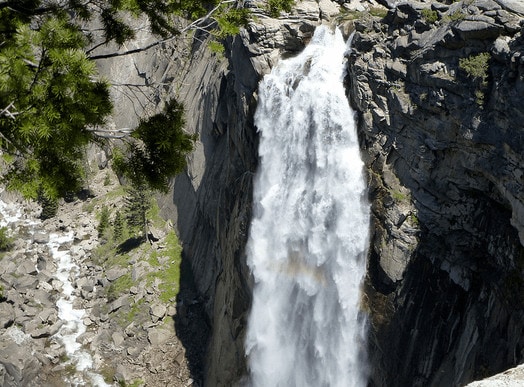
Region: Yosemite – Glacier Point Road
Drop: 370 ft (113 m)
Best Time To See: Year-round, with peak flow in late May
Visible only to hikers after a two-mile hike from Glacier Point along the Panorama Trail, Illilouette Fall feels secluded as it plunges through a small canyon with its rocky companion Liberty Cap looming in the distance. The elevation drop is over a thousand feet, so hikers should be in good shape and prepared for the steep climb back. If you’re in the mood for more miles, you can continue on and connect to the Mist Trail where more views of Illilouette Fall can be found below Vernal Fall.
Waterwheel Falls
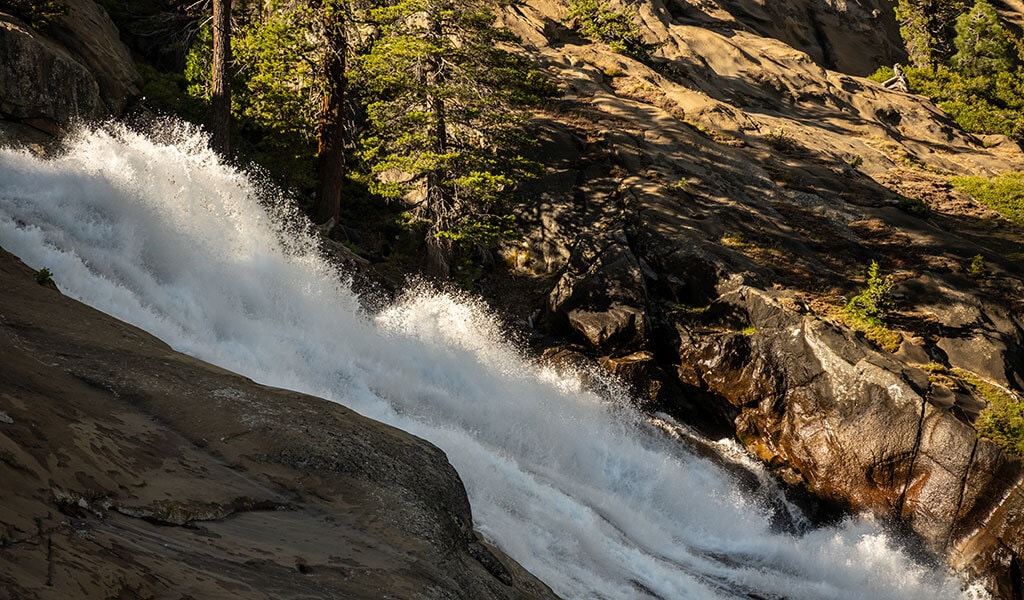
Region: Tuolumne Meadows (Northern Yosemite)
Drop: A series of large cascades with water pluming skyward
Best Time To See: Early summer to early fall
Located inside Yosemite National Park in Northern Yosemite along Tioga Pass and requiring some gumption to reach, Waterwheel Falls is truly unique. As the Tuolumne River gushes steeply towards Tuolumne Canyon, granite ledges force the water skyward into “waterwheels” that are equal parts misty rainbow and hydrologic force. Getting here is the trick: a day hike from Tuolumne Meadows to Waterwheel is 20 miles out & back. Overnighting at Glen Aulin High Sierra Camp (6 miles from trailhead) or in the surrounding backcountry is another option, with all overnight backcountry visits to Yosemite requiring a wilderness permit. Note: Tioga Road closes seasonally for the winter and reopens late spring/early summer. Be sure to check status before heading up.
Jackson Falls
Region: Fish Camp (Central Mariposa County)
Drop: Three-tier
Best Time To See: March-November, or year-round when there is little snow
For visitors staying in Fish Camp, or any adventurous souls wanting to explore the Sierra National Forest, the little-visited Jackson Falls can be a feather in your waterfalling cap. Finding the trailhead to Jackson Falls can be a bit tricky, but the payoff of three granite-carved pools is worth the effort. Along Highway 41 just south of the entrance to Tenaya at Yosemite, turn onto Jackson Road/Big Sandy (Road 6S67) leading to the Yosemite Trails Horseback Adventures. Drive approximately two miles until you reach an abandoned fruit orchard and an old driveway. Follow the driveway past the metal gate to an abandoned cabin and you are at the trailhead for Jackson Hole/Lewis Fork Ditch. The mostly-wooded trail provides good cover and travels approximately .5 miles to the lowest pool at Jackson Falls. To continue, you must follow a manageable yet unmaintained path creekside up to the next two granite-bowl swimming holes that go by the names of Arrowhead and Skinny Dip respectively. About 2.5 miles round-trip.
Tips For The Mist
- Waterfall mist can be heavy, so be sure to wear a rainproof jacket or poncho with hood.
- Never enter pools above waterfalls (for obvious reasons).
- Never stand directly beneath a waterfall — falling rocks can come down with water.
- Check for peak flow to avoid disappointment — seasonal waterfalls often run dry later in the summer.
- Protect camera gear with a plastic bag or waterproof sleeve and bring a small rag to wipe mist from your lens.
- With so many Yosemite waterfalls to explore, savor the exhilarating rush by staying in Yosemite Mariposa.
To explore lodging options, things to do and places to eat, visit Yosemite.com, the #1 trip planning site for vacations to Yosemite National Park and historic Mariposa County. To stay up to date, follow @YosemiteNation on social media and subscribe to our newsletter, “The Wanderer”. Be sure to subscribe to our YouTube channel for great videos on the people and places of Yosemite Mariposa County.


